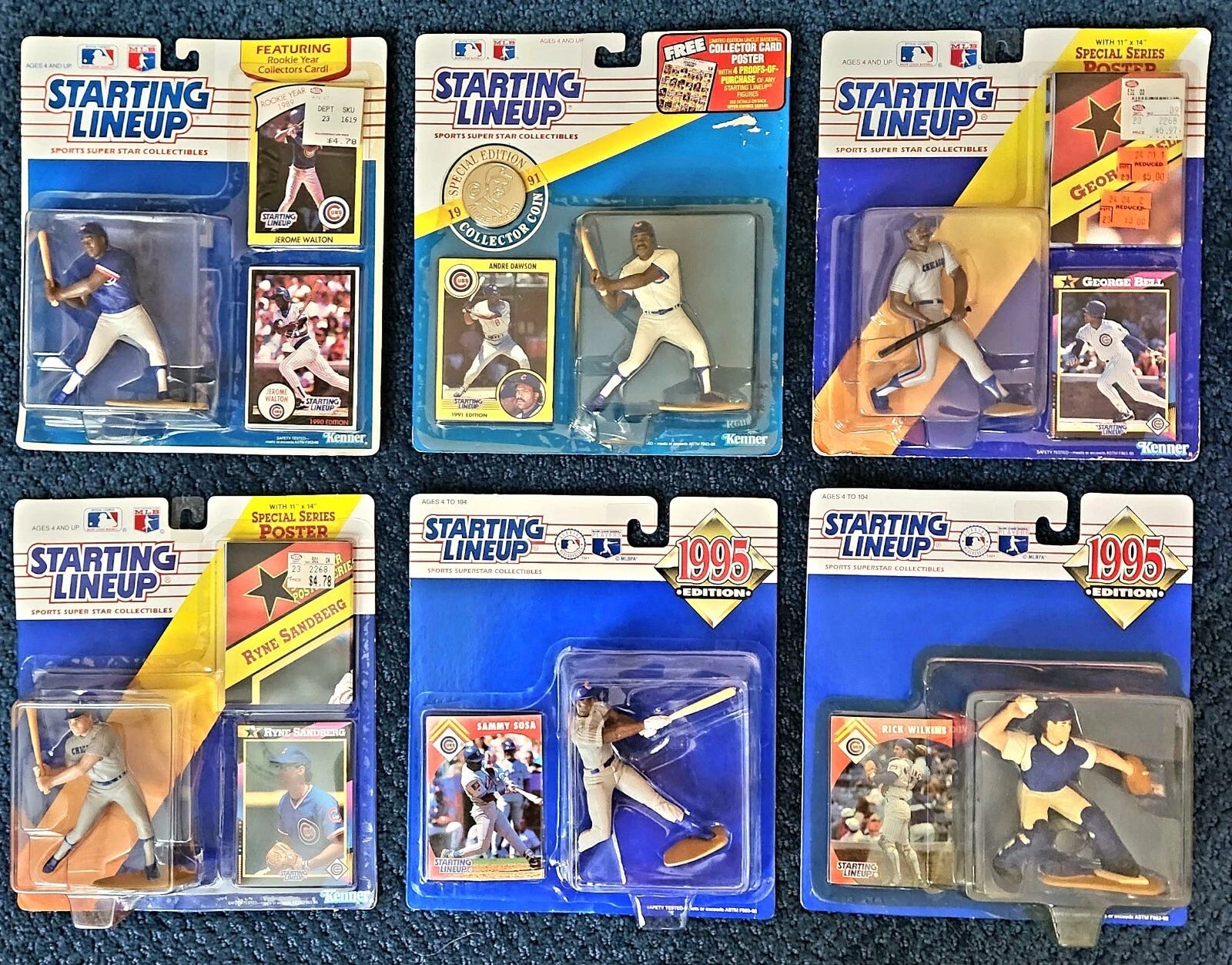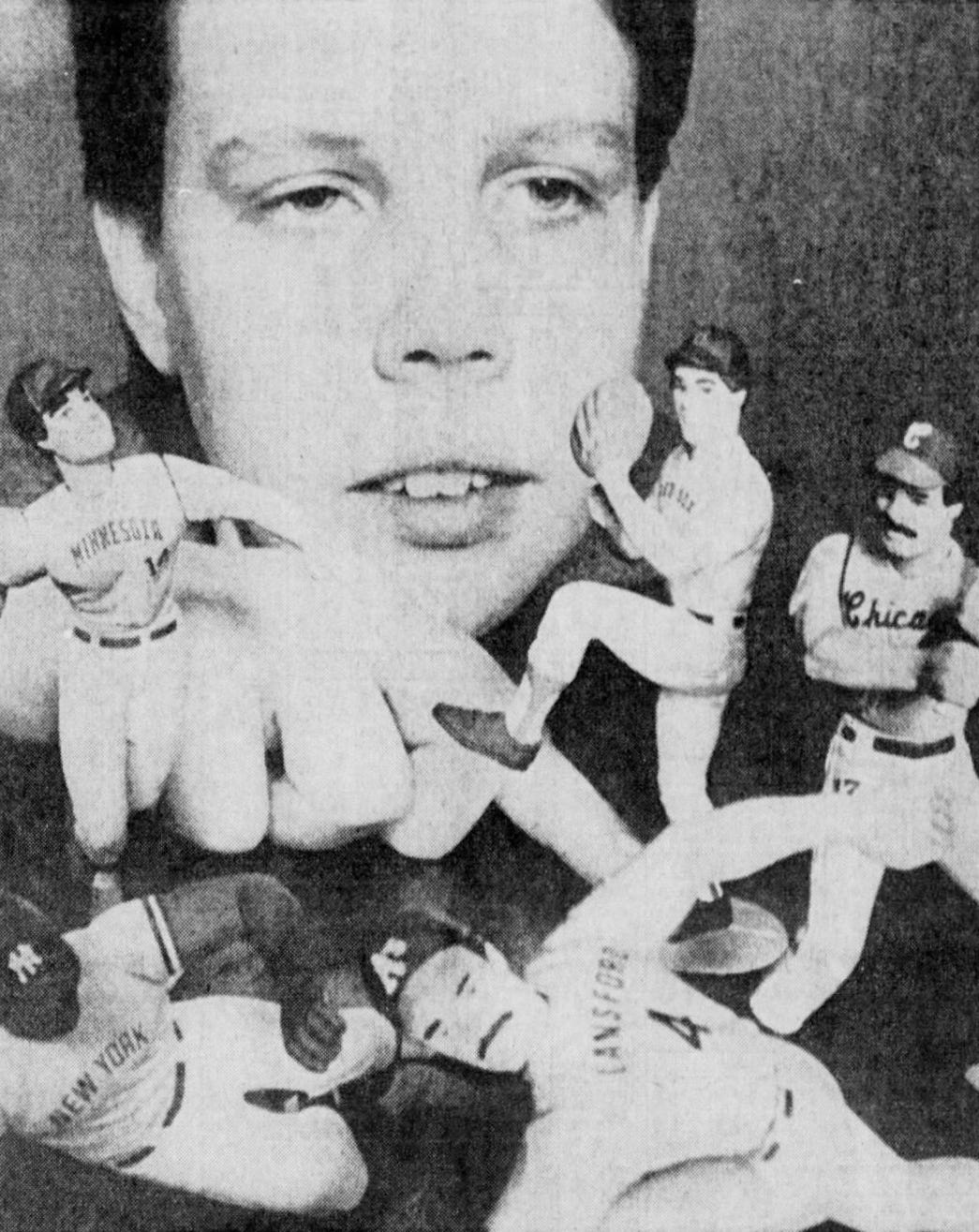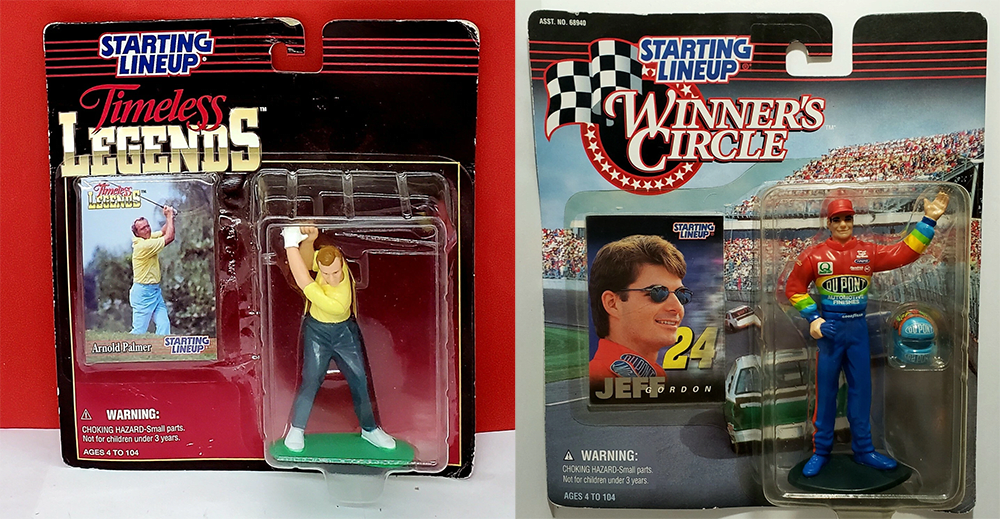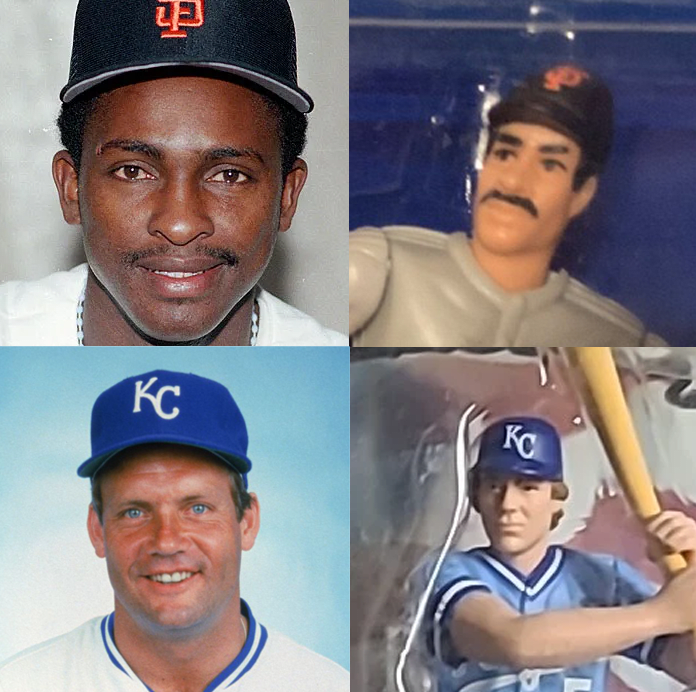Starting Lineup: Shoddy Goods 043
2
Ever look back at a trend and feel like it just barely missed you? I’m Jason Toon and if the subject of this week’s Shoddy Goods, the newsletter from Meh about the stories behind consumer culture, had come out a couple of years earlier, I’d’ve been all over it.

It was 1985. In a concrete office building towering over the red-brick row houses of Cincinnati, Pat McInally waited to pitch an idea to the hottest toy company in America. Kenner Toys had basically created the action-figure market with its Star Wars line, and followed it up with megahits like Strawberry Shortcake and Care Bears. The Kenner touch could turn a new toy line into a household name and make everyone involved very rich.
McInally probably wasn’t especially nervous. He’d faced high-pressure situations before, many of them just a few blocks away at Riverfont Stadium as a punter and a wide receiver for the Cincinnati Bengals. But this ten-year National Football League veteran was an unusual one: he’d graduated cum laude from Harvard, and to this day remains the only NFL player to achieve a perfect score on the Wonderlic intelligence test given to all draft prospects.
Where most athletes spent the off-season fishing or golfing, McInally’s side hustle was writing a syndicated newspaper column called “Pat Answers for Kids”, with advice for young athletes like “Don’t allow yourself to get hung up on championships to the point that you lose track of the place sports should hold in your life.”
So he was probably smart enough to know he needed a really good idea. Even in Cincinnati, his Pro Bowl past wasn’t enough to get a company like Kenner to invest in him. So he brought two props: a GI Joe figure he’d bought on the way over, and a baseball card.
Players gonna play
At the time, both action figures and baseball cards were booming. So combining them must have seemed like one of those sure-thing X-meets-Y elevator pitches. But it only happened because Pat McInally was moving his family to California now that his Bengals career was over. The guy he sold his Cincinnati condo to happened to be a Kenner executive. They got to talking and the Kenner guy told Pat that if he came up with any good toy ideas, bring them to Kenner.
It took a few years, during which Kenner merged with Parker Brothers, and then was acquired by Tonka as Kenner-Parker. But the first Starting Lineup figures finally took the field in time at the American Toy Fair in February, 1988.

Don’t look so excited, kid, jeez. I’d hate to see the photos from this shoot they didn’t use.
The MLB set included 132 players, the NFL set had 137, and the NBA had 85, a proportion which roughly reflected the popularity of the leagues at the time, before the NBA really took off. Each figure stood 4 inches tall and had a couple of moveable parts while being mostly locked in a specific action pose. Each one wore the accurate, fully-licensed uniforms of their real team, and included a trading card.
From the start, buzz was good. Tonka told investors that “two lines, Sega and Starting Lineup, were excellent candidates to crack the magical $50 million-$100 million annual sales level.” Does it seem ridiculous now to talk about Starting Lineup in the same breath as Sega? Consider this: sales of the Sega Master System imported by Tonka struggled so badly that both parties dissolved their arrangement a year later, while Starting Lineup lasted 14 years.
Yeah, that 1988 set sold well enough that they released even more the next year, adding NHL players a few years later. Starting Lineups became a fixture of early 1990s toy sections and baseball card stores alike. Kenner was bought by Hasbro in 1991 and the new figures kept coming. But the '90s sports card crash hurt, and the 1994 baseball strike and 1998 basketball lockout didn’t help.
Starting Lineup concentrated more and more on special editions and variations of the same star players. As great as the players were on the field, it turned out that the public only had an appetite for so many different poses of Jeff Bagwell and Tom Glavine. Forays into sports beyond the big four met with limited success, too.

Feels like these are stretching the concept of “action” figure
Hasbro quietly let the licenses lapse and Starting Lineup eased into oblivion in 2000. By then, the figures, still optimistically encased in never-opened packages, were a common sight in thrift stores and flea markets. Like baseball cards from the “junk wax” era, most of these figures haven’t seen any significant bounce in value: you can buy standard Starting Lineup figures by the lot on eBay for a few bucks apiece. An attempted revival in 2022 announced new NBA and NFL figures, but the NBA ones sold so poorly the NFL line was never released.
By the power of Damon Berryhill!
Why didn’t all that promise translate into a permanent presence? In retrospect, the cracks in the concept are clear. Starting Lineups had some of the characteristics of baseball cards and action figures, but not necessarily the ones that made those products irresistible.
Trading cards are cheap to make and easy to store. It’s not at all unwieldy for Topps to produce thousands of different cards a year in dozens of different sets, and even an enthusiastic kid can reasonably hope to collect 'em all. But hundreds of action figures? At a list price of $3.99 each back when minimum wage was $3.35 an hour? You’d have to flip a lot of burgers to even make a dent in that checklist.
And where would you keep them? Just a couple of figures still in their packages take up about as many cubic inches as a whole Topps baseball set.
Also, baseball cards offer accurate photographs of the players. Early Starting Lineup figures all had the same few faces - white guy or black guy, with or without glasses or mustache - and the same wide-shouldered body for linebackers and shortstops alike. They got a little better over time, but still, take them out of their packages and even a fan would be hard-pressed to identify them.

Jose Uribe and George Brett with their alleged likenesses.
Not that anyone took them out of the packages. For alleged action figures, they just weren’t much fun to play with. If a guy was posed diving for a ground ball, you couldn’t send him up to bat. The scope for any kind of imagination was as limited as their points of articulation. That’s why there’s been no nostalgia bump all these years later: very few people have fond memories of playing with Starting Lineups. Mostly kids, like, got a couple for Christmas and put them on a shelf or under a bed, hoping they’d be worth of lots of money someday.
Starting Lineups just weren’t high-quality enough to appeal to collectors of sports memorabilia, either. There are grown men who will happily display a miniature statue of Larry Bird in their home if it actually looks like Larry Bird. Other more specialized companies stepped into that market, which was too small for a company like Hasbro to bother with.
As for the geek collectors of other kinds of action figures and toy lines? Forget it. When you can capture mythic icons like Chewbacca, Optimus Prime, and Skeletor in your vault of unopened toys, why would you settle for a backup catcher and career .240 hitter?
No, despite the seemingly can’t-miss concept, Starting Lineup didn’t do quite enough to satisfy its various audiences to become essential to any of them. And yet, unlike the misbegotten music cards of 1991, you can’t call Starting Lineup a failure. It lasted 14 years, and generated a reported $700 million in total sales. For an athlete, that’s the kind of career that could get you a Hall of Fame plaque - or even your own action figure.
I was never into straightforward action figures, so I was especially unlikely to get into sports ones. For me, my primary “move the guy around” imagination time was focused on Transformers, because it felt like they actually did something. How about you, what dolls or action figures played a major role in your childhood playtime? Let’s hear about ‘em in this week’s Shoddy Goods chat.
—Dave (and the rest of Meh)
Presenting the superstars of the Shoddy Goods Hall of Fame, immortalized in stunningly lifelike pixels:
- 12 comments, 4 replies
- Comment
I was born in the era Wich action figures were MOSTLY a thing of the past, so instead I had my childhood shaped by LEGO. I am still a sucker for the video games.
The original 1/6 G.I. Joe’s were big when I was a kid; I had a couple but they were expensive and Captain Action had better hands.
Johnny West had stuff that was less brittle. Some of that stuff survived.
None. LEGO and a Science Fair kit from Radio Shack, OTOH …
I had a couple of G.I. Joe “action figures” when I was a kid. (Okay, dolls for boys, but whatever)
One was an older original, with molded plastic and painted “hair” and the other a newer one with sprayed on “Chia Pet” type fuzz for hair. Our dog chewed a hole in the fuzzy one, and us kids called him “Harry Hole in the head.” Both had removable clothes; both wearing olive drab uniforms.
I also had the Army Jeep. The thing was probably two feet long, (Large enough for a 12" tall doll to sit in) and had a searchlight in the back end powered by maybe a lantern battery. Might have been D cells, can’t remember 50 years ago.
The entire lot disappeared in a move. Also vanished and worth beaucoop bucks today, was a pretty large collection of O gauge train stuff. “Steam” engines with a bottle of liquid smoke you put in so it would puff smoke out its stack when running. A lot of the three-rail track. I still wonder where it all went, parents probably garage-sale or gave away.
@user06258054 I had the original larger G.I. Joe too. My favorite G.I. Joe thing was the Mercury Space Capsule which I kept all these years from my childhood in the '60s. I gave it away to a friend a few years ago for her grandchildren to play with, but I don’t think they ever did. I may ask her if she still has it and doesn’t want it, just to have it for old time’s sake. I think I had a G.I. Joe jeep too, but if I did I didn’t keep that one.
I had just enough nostalgia for the 80s Royals/Starting Lineup figures that I got the first year George Brett and Dan Quisenberry loose for a few bucks apiece online to put on my desk at work.
As for my favorite action figures, I had a lot of He-Man, then a lot of Ghostbusters. Then I had largely grown out of them.
G1 transformers were my jam. I had so many. Loved them. I still have a bunch in my basement. Unfortunately they’ve been played with too much to be worth much of anything.
I just came here to say Micronauts

No action figures for me - I was more into toy trucks and weapons.


I had He-man action figures. I was very big into He-man as a little kid. I actually still have them, they’re in really good condition too. I never really got into Barbie’s, I was the only girl in the neighborhood so if I wanted to play I had to play boy stuff. All I did with my Barbie’s was dress them up and cut their hair.
My brothers and neighbors were very much into action figures. The story I never hear the end of is that I sold all their beloved action figures (2 huge closets packed full) at a garage sale well below cost. I told them for a month to clean out the closets bc I was moving into that room and if they didn’t I was gonna throw everything away inside. They didn’t believe me. I figured why shouldn’t I make some money for my hard work too.
@Star2236
Don’t you hate it when your siblings don’t listen to you!
Another thing I loved was the universal monsters. If I could just find the remco monsters play case I know I put away somewhere, I’d be all set. I still have my original glow in the dark creature from the black lagoon, he’s my prized possession. Though all my teens and twenty’s I had him sitting on a shelf in my room, now he’s tucked in a box. Up until my dad died, my favorite thing to do at Halloween was watch the old tcm Halloween movies with him. He really got me into the universal monsters.
@Star2236 In my day, it was Aurora model kits.

@aetris
That’s so cool
Not an action figure, but I just want to say: Light Bright.
Thanks.
Spent more time outside than in. Not really into action figures/dolls but did have Lincoln Logs and Tinker Toys in my day.